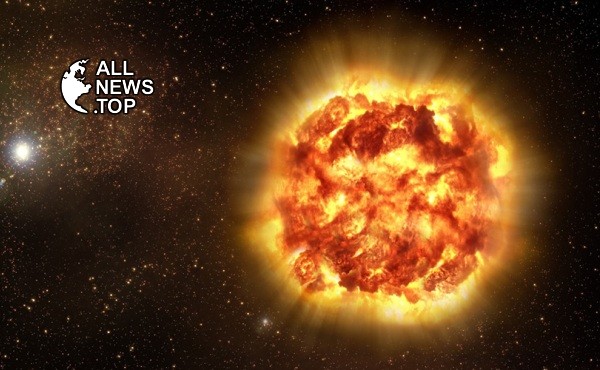
Scientists make disappointing forecasts regarding the death of our star...What cataclysms await our Sun after the death of a star? Scientists have prepared a new prediction about what the end of our star will be like and what our solar system will look like after that. To some extent or unfortunately, humanity will not be able to see the last moments of the star’s life. It will die out much earlier, unless, of course, it has moved to some other planetary system by that time.

According to the conclusions of earlier studies, our Sun should turn our system into a so-called planetary nebula - a bright cloud of hot gas and dust - but subsequent studies suggested that the process of the death of our star will be more widespread. In a new article published in the journal Nature Astronomy, researchers say that after the death of the Sun, our system will indeed turn into a giant glowing “bubble” of dust and gas, which will exist in this form for several thousand years and then disappear.
Numerous studies and observations show that the life cycle of stars comparable in mass to the Sun is about 10 billion years. The current age of the Sun is about 4.6 billion years. In other words, our star has about 5 billion years left. However, during this time, of course, many interesting things will happen.

Astronomers say that in about 5 billion years, the Sun will turn into a red giant. At this point, the star's core will shrink in size, while its outer layers will expand enough to reach the orbit of Mars, consuming our planet in the process. Of course, if by this moment the planet is still in its place. As we are. The fact is that humanity only has about 1 billion years left on Earth.
The problem is explained by the fact that the brightness of our star increases by about 10 percent every billion years. It may seem like very little, but it is quite enough to put an end to all life on Earth. With this increase in brightness, our planet's oceans will evaporate as the surface becomes too hot to support the formation and retention of water. In short, we will all come to an end. Again, if by this time we do not find some more suitable world to inhabit or simply go extinct. Today no one doubts such a fate of the star, but scientists have been arguing for almost three decades about what the planetary nebula generated by it will look like and whether it will exist at all.
Several earlier studies have suggested that the formation of a bright planetary nebula requires a star at least twice the mass of our Sun. A new computer model developed by an international team of astronomers shows that our Sun, like 90 percent of other stars, is first waiting to enter the red giant phase. Then, when the core, in which thermonuclear reactions gradually stop, cools down, the star will turn into a white dwarf. Its light will heat up and illuminate the surrounding gas clouds, turning them into a bright spot in the night skies of other worlds, and the solar system will become a so-called planetary nebula. Author: GEximius


 Scientists make disappointing forecasts regarding the death of our star...What cataclysms await our Sun after the death of a star? Scientists have prepared a new prediction about what the end of our star will be like and what our solar system will look like after that. To some extent or unfortunately, humanity will not be able to see the last moments of the star’s life. It will die out much earlier, unless, of course, it has moved to some other planetary system by that time.
Scientists make disappointing forecasts regarding the death of our star...What cataclysms await our Sun after the death of a star? Scientists have prepared a new prediction about what the end of our star will be like and what our solar system will look like after that. To some extent or unfortunately, humanity will not be able to see the last moments of the star’s life. It will die out much earlier, unless, of course, it has moved to some other planetary system by that time.

